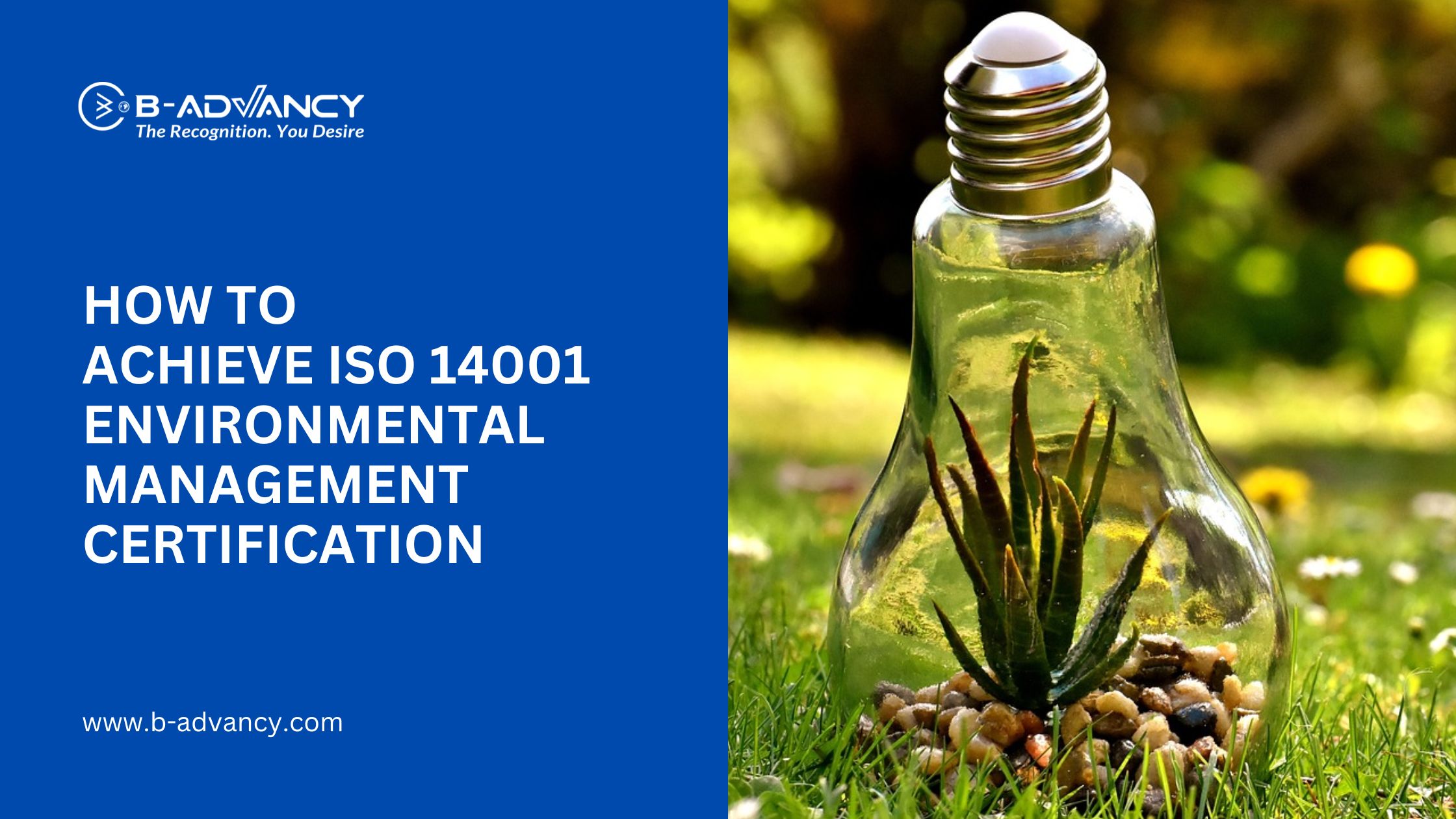
In today's world, environmental responsibility is a crucial aspect of any business operation. ISO 14001 certification represents a commitment to sustainability and environmental management. This certification helps organizations minimize their environmental footprint, comply with regulations, and enhance their reputation. In this blog, we'll explore the steps required to achieve ISO 14001 certification, the benefits it offers, and how it can transform your business.
ISO 14001 is an internationally recognized standard for Environmental Management Systems (EMS). It provides a framework for organizations to protect the environment, respond to changing environmental conditions, and integrate environmental management into their business processes. Achieving ISO 14001 certification demonstrates an organization's dedication to environmental performance and compliance with relevant laws and regulations.
Environmental management certification is essential for businesses looking to operate sustainably and responsibly. It helps organizations reduce waste, improve resource efficiency, and lower environmental risks. Moreover, it enhances a company's reputation, opens up new market opportunities, and can lead to cost savings through improved efficiency.
Regulatory Compliance: Ensures adherence to environmental laws and regulations, reducing the risk of fines and legal issues.
Improved Environmental Performance: Promotes better management of environmental impacts, leading to more sustainable operations.
Enhanced Reputation: Demonstrates a commitment to environmental responsibility, which can attract customers, investors, and partners.
Cost Savings: Through efficient resource use and waste reduction, organizations can achieve significant cost savings.
Market Opportunities: Opens doors to markets and clients that prioritize environmental responsibility.
ISO 14001 is an international standard for creating and maintaining an effective Environmental Management System (EMS). Its purpose is to help organizations improve their environmental performance through more efficient use of resources and reduction of waste.
The standard follows the Plan-Do-Check-Act (PDCA) cycle and includes key elements such as:
Context of the Organization
Leadership
Planning
Support
Operation
Performance Evaluation
Improvement
Implementing ISO 14001 helps organizations identify and control the environmental impact of their activities, products, or services. This proactive approach leads to a significant reduction in pollution and resource consumption.
Beyond environmental benefits, ISO 14001 certification can provide competitive advantages, enhance compliance with legislation, and improve stakeholder relationships. It also positions companies as leaders in sustainability.
Assess your current environmental management practices to identify gaps and areas for improvement. This involves reviewing existing processes and comparing them to ISO 14001 requirements.
Leadership support is crucial for the success of your EMS. Ensure top management is committed to providing the necessary resources and support for the implementation and maintenance of the EMS.
Form a team responsible for developing, implementing, and maintaining the EMS. Assign clear roles and responsibilities and provide adequate training and education to ensure the team's effectiveness.
Clearly define the boundaries of your EMS. This involves identifying which parts of the organization the EMS will cover and drafting a scope statement that outlines these boundaries.
Create a statement of commitment to environmental management. This policy should be communicated internally and externally to demonstrate your organization's dedication to sustainability.
Develop procedures for identifying environmental aspects (elements of your activities that can interact with the environment) and impacts (changes to the environment resulting from these aspects). Assess their significance to prioritize actions.
Establish specific, measurable, achievable, relevant, and time-bound (SMART) objectives and targets linked to your environmental policy. These will guide your efforts and help track progress.
Create and document the necessary procedures and processes to control your environmental aspects. Ensure you have robust document control, operational controls, and emergency preparedness plans.
Develop training programs to ensure all employees are aware of their roles in the EMS. Building environmental awareness is key to successful implementation.
Establish key performance indicators (KPIs) to monitor and measure your environmental performance regularly. Collect and analyze data to ensure continuous improvement.
Develop an audit schedule and plan. Conduct internal audits to verify that the EMS is functioning as intended and identify areas for improvement. Report findings to management.
Hold regular management review meetings to evaluate the EMS's performance. Review audit findings, address non-conformities, and plan for continuous improvement.
Choose an accredited certification body based on criteria such as reputation, experience, and cost. Engage with the body to understand the audit process and requirements.
Prepare for the certification audit by conducting a thorough review of your documentation and ensuring all processes are in place. Use a pre-audit checklist to verify readiness.
If non-conformities are identified during the audit, develop corrective action plans to address them. Differentiate between major and minor non-conformities and ensure timely resolution.
Commit to ongoing monitoring, measurement, and improvement of your EMS. Regularly review and update your processes to maintain effectiveness.
Understand the frequency and process of re-certification audits to keep your certification up-to-date. Prepare for these audits by maintaining high standards and continuous improvement efforts.
Achieving ISO 14001 certification is a significant step towards sustainability and environmental responsibility. By following these steps, your organization can develop an effective EMS, enhance environmental performance, and reap the benefits of improved reputation, regulatory compliance, and operational efficiency. Commit to continuous improvement and stay proactive in your environmental management efforts to maintain your certification and contribute positively to the environment.